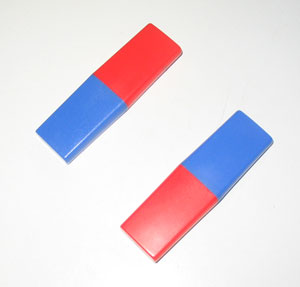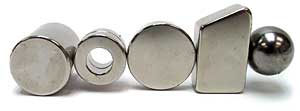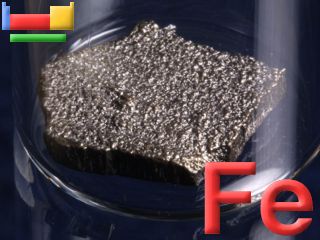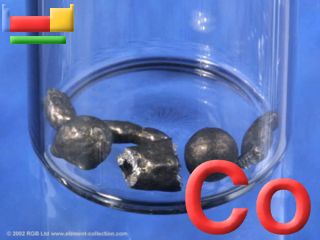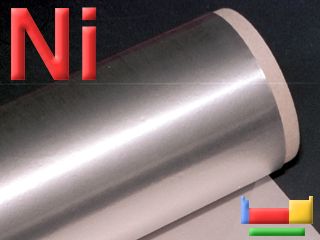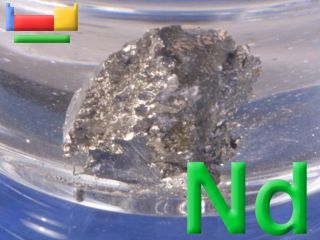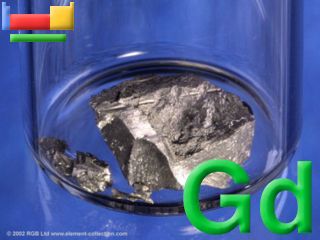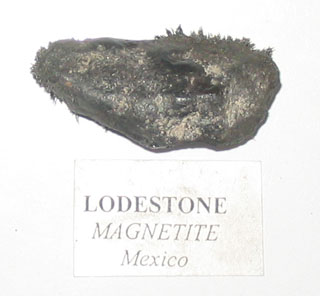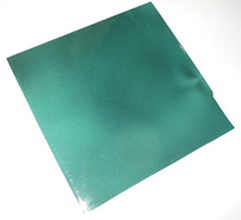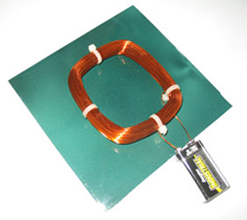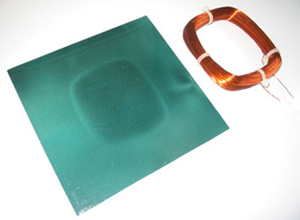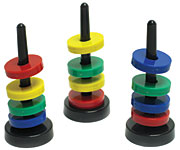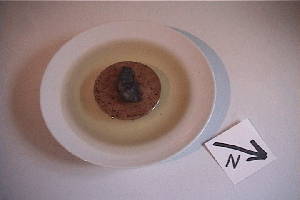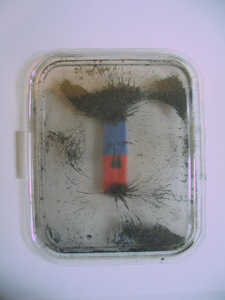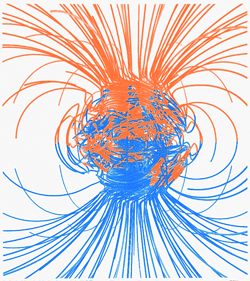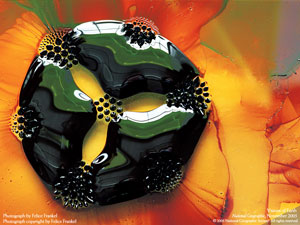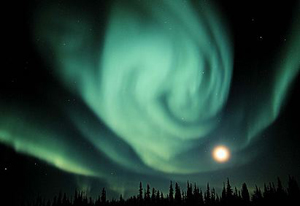This
is the coolest demonstration of the presentation's collection.
- Click on the image to play
the movie clip.
- Start with the magnetic viewing
film not showing.
- Ask the class how fast objects fall due to gravity (9.8 m/s). Objects
should fall though the tube (1 m) in less than 1 sec.
- Drop the stainless cylinder through the tube to confrim this fact.
- Before droping the neodymium cylinder: ask the class whether it drops
faster, slower or stops through the tube, then drop it. It will take about
9 secs to fall.
- Ask why the magnet might move slower through the tube (remember gravity
affects ALL OBJECTS equally) and the copper tube is not paramagnetic (uneven
spins, which permanent magnetic material must have) but diamagnetic (paired
spins).
- Try different magnets, each one will have a different magnetic shadow
and fall at different times.: sphere: 4 sec., disk: 16 sec., odd shape:
3 sec.
- Ask why the different magnets might fall through the tube at different
times (It has to do with shape and size). The tighter the fit in the tube
the slower it will travel through it.
- Also notice that instead of the magnets falling at a constant acceleration,
they are falling with nearly constant velocity, which means a repelling
force is involved which is negating the force of gravity.
- More principles of magnetism need to be explored before an answer can
be fully formulated. |
 |
Pass
out magnet and viewing film.
- The magnets handed out can
be either the red/blue or the 1 cm disk neodymium magnets.
- The magnetic viewing will
not show a shadow for any other material, it only works with magnetic
materials.
- It is similar to iron filings in a gel, wrapped in two sheets of plastic.
- Please note: The film is not transparent and will not show up on the overhead. |
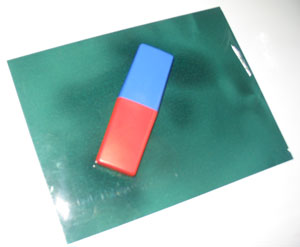 |
